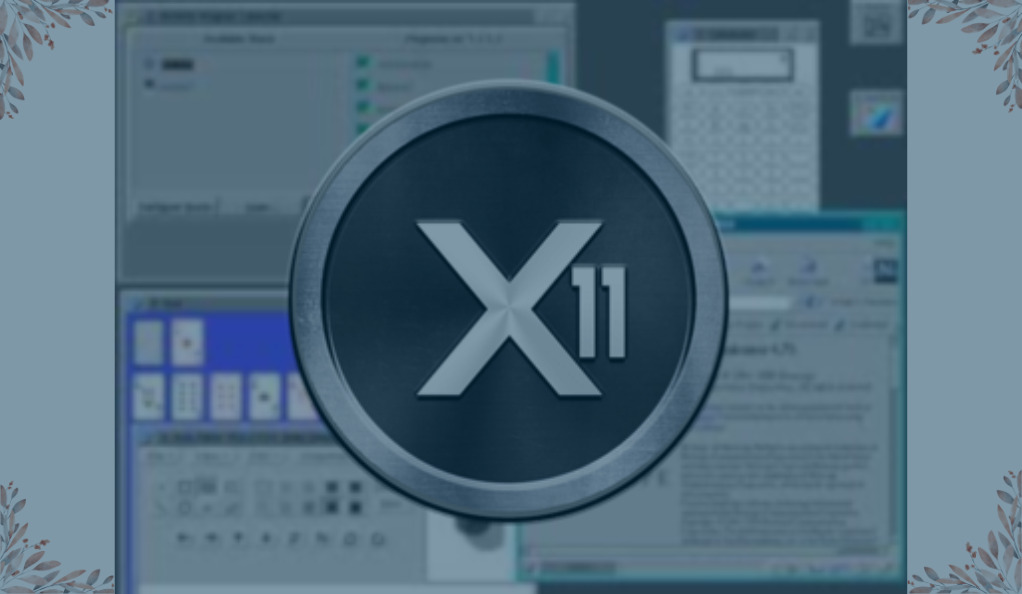The world of cryptocurrency is vast and complex, with myriad algorithms and protocols that ensure the security and efficiency of digital transactions. Among these, the X11 algorithm stands out not just for its name, but for the intricate design and robustness it brings to the table. But what exactly is the X11 algorithm, and why is it so significant in the crypto realm?
What is the X11 Algorithm?
At its core, the X11 algorithm is a proof-of-work hashing function. This means that it plays a crucial role in validating and verifying transactions within a blockchain. Unlike other algorithms that rely on a single hashing function, X11 is unique in its use of not one, but eleven distinct hash functions. This multi-layered approach enhances the security of transactions, making them more resistant to potential threats and vulnerabilities.
Why is X11 Significant?
The strength of the X11 algorithm lies in its design philosophy. By employing eleven different hash functions, it ensures that even if one or two functions become vulnerable, the overall system remains secure. This redundancy is by design, ensuring a multi-faceted defense against potential threats.
Historical Background: Tracing the Origins of X11
The X11 algorithm didn’t emerge in a vacuum. Its inception is closely tied to the visionary mind of its developer, Evan Duffield. In the early days of cryptocurrency, as Bitcoin began to gain traction, there was a growing need for alternative algorithms that could address some of the challenges posed by Bitcoin’s SHA-256.
Evan Duffield and the Birth of X11
Evan Duffield recognized these challenges and saw an opportunity to introduce a new algorithm that would not only be secure but also energy-efficient. In 2014, he developed and introduced the X11 algorithm as a part of the Darkcoin protocol, which later rebranded to Dash. Duffield’s primary motivation was to create an algorithm that was resistant to ASIC (Application-Specific Integrated Circuit) mining, ensuring a more decentralized and democratic mining process.
Implementation into the Darkcoin Protocol
Darkcoin, now known as Dash, was one of the first cryptocurrencies to adopt the X11 algorithm. The choice wasn’t just about security; it was also about creating a more user-friendly cryptocurrency. With X11 at its core, Dash offered faster transaction times and enhanced privacy features, setting it apart from many of its contemporaries.
The success of Dash and the evident advantages of the X11 algorithm led to its adoption by several other cryptocurrencies. Its multi-hash function design became a benchmark for security and efficiency in the crypto world.

The Legacy of X11
Over the years, the X11 algorithm has proven its worth. Its resilience against potential threats, combined with its energy-efficient design, has made it a preferred choice for many in the cryptocurrency community. While newer algorithms have since emerged, X11’s foundational principles and its contribution to the decentralization of mining remain pivotal in the ongoing evolution of blockchain technology.
The Core of X11: 11 Hash Functions Unraveled
The true essence of the X11 algorithm lies in its composite structure, utilizing eleven distinct hash functions. This multi-layered approach is what sets X11 apart from many other cryptographic algorithms. But why eleven? And what does each function bring to the table? Let’s dive deeper.
A Symphony of Hash Functions
Each hash function in the X11 algorithm has its unique properties and strengths. When combined, they create a robust and secure system that ensures data integrity and resistance against potential threats. Here’s a closer look at each:
- BLAKE: Known for its high speed, BLAKE is pivotal for ensuring data integrity within the X11 framework.
- BMW (Blue Midnight Wish): This function excels in data scrambling, providing efficient compression and enhancing the unpredictability of the hash output.
- Groestl: A champion of security, Groestl is resistant to differential cryptanalysis, a method used to find the difference between plaintext and its encryption.
- JH: With its versatility, JH is suitable for both hardware and software applications, making it a flexible component of X11.
- Keccak: Recognized for its security prowess, Keccak was the winner of the NIST hash function competition, a testament to its robustness.
- Skein: Its flexibility is Skein’s hallmark, allowing it to be configurable to various output lengths, catering to different cryptographic needs.
- Luffa: Designed for efficiency with short messages, Luffa excels in parallel processing, making it a valuable asset in the X11 ensemble.
- Cubehash: With its high diffusion and avalanche effect, Cubehash ensures that even a tiny change in input results in a drastically different output.
- Shavite: Optimized for 32-bit platforms, Shavite is known for its speed, ensuring rapid hash computations.
- SIMD (Single Instruction, Multiple Data): As the name suggests, SIMD processes multiple data elements in parallel, enhancing the efficiency of the hashing process.
- Echo: Prioritizing data integrity, Echo boasts high resistance against generic attacks, fortifying the X11’s defense mechanisms.
The Power of Combined Hashing
The decision to integrate eleven hash functions wasn’t arbitrary. By layering multiple functions, X11 ensures a multi-dimensional defense. If a vulnerability is discovered in one function, the combined strength of the others ensures the system’s overall integrity remains uncompromised.
X11 in Cryptocurrencies: Beyond Just an Algorithm
The X11 algorithm, while technically intriguing, is not just a theoretical marvel. Its practical applications, especially in the realm of cryptocurrencies, have solidified its position as a cornerstone in blockchain technology.

Dash: The Flagbearer of X11
Dash, formerly known as Darkcoin, was the first cryptocurrency to fully embrace the X11 algorithm. Its adoption wasn’t merely about integrating a new hashing function; it was a strategic move to address some of the inherent challenges in the crypto space. With X11 at its helm, Dash offered enhanced privacy features, faster transaction times, and a more decentralized mining process. These features quickly propelled Dash to prominence, making it one of the top cryptocurrencies in the market.
The Ripple Effect: Other Cryptocurrencies Join the Fray
The success of Dash did not go unnoticed. The evident advantages of the X11 algorithm—its security, energy efficiency, and ASIC resistance—made it an attractive choice for other emerging cryptocurrencies. Over time, a slew of digital currencies integrated the X11 algorithm into their frameworks, further cementing its importance in the crypto ecosystem.
A Catalyst for Innovation
The adoption of X11 by multiple cryptocurrencies spurred innovation in the mining hardware industry. Recognizing the algorithm’s ASIC-resistant nature, hardware developers began creating specialized devices tailored for X11 mining. These devices, while optimized for X11, ensured a more energy-efficient mining process, reducing the overall carbon footprint of cryptocurrency mining.
Decentralization: The Heart of X11’s Influence
One of the most significant impacts of the X11 algorithm in the crypto world is its contribution to decentralization. By being resistant to ASIC mining, X11 levels the playing field, allowing individual miners with modest setups to participate in the mining process. This democratization ensures that mining power isn’t concentrated in the hands of a few, promoting a more equitable distribution of rewards and fostering a truly decentralized network.
Advantages of X11: Setting the Gold Standard
The X11 algorithm, with its intricate design and multi-layered approach, offers a plethora of benefits that have made it a sought-after choice in the cryptocurrency domain. Let’s delve into the key advantages that set X11 apart.

Unparalleled Security
The multi-hash function design of X11 is its primary defense mechanism. By employing eleven different hash functions, X11 ensures a robust security framework. Even if a vulnerability arises in one of the functions, the combined strength of the others acts as a safeguard, ensuring the integrity of the entire system.
Energy Efficiency: A Sustainable Approach
In the realm of cryptocurrency mining, energy consumption is a pressing concern. The X11 algorithm, with its design, promotes energy efficiency. Miners using X11 have reported lower heat generation and reduced power consumption, making it a more environmentally friendly choice compared to other algorithms.
ASIC Resistance: Democratizing Mining
Centralization in mining is a significant challenge in the cryptocurrency world. X11’s ASIC-resistant nature ensures that mining remains accessible to individuals, preventing the concentration of mining power. This resistance promotes a more equitable distribution of mining rewards and upholds the decentralized ethos of cryptocurrencies.
Faster Transaction Times
Speed is of the essence in digital transactions. Cryptocurrencies utilizing the X11 algorithm benefit from faster block generation times, leading to quicker transaction confirmations. This speed enhances user experience and ensures timely transfers, especially crucial for time-sensitive transactions.
Enhanced Privacy Features
Privacy is a cornerstone of the digital world, and X11 doesn’t disappoint. With its unique design, the algorithm offers enhanced privacy features, ensuring that transaction details remain confidential, adding an extra layer of security for users.
Adaptability and Future-Proofing
The modular nature of X11, with its eleven hash functions, ensures adaptability. If there’s a need to replace or upgrade a particular hash function in the future, the structure of X11 allows for such modifications without overhauling the entire system.
Critiques and Limitations: A Balanced Perspective on X11
While the X11 algorithm boasts numerous advantages, it’s essential to approach it with a balanced perspective. Like any technology, X11 has its critiques and potential limitations that stakeholders should be aware of.
The Double-Edged Sword of ASIC Resistance
X11’s ASIC resistance, while promoting decentralization, has its critics. Some argue that as ASICs become more advanced, the resistance might eventually be overcome. Moreover, while ASIC resistance democratizes mining, it can also lead to GPU shortages, as miners scramble to acquire these devices for mining purposes.
Evolution of Cryptographic Attacks
Cryptographic algorithms, including X11, are in a constant race with hackers and potential threats. As new vulnerabilities are discovered, there’s always a risk, albeit minimal, that even a multi-hash function system like X11 could be susceptible. Staying updated and vigilant is crucial.
Complexity and Implementation Challenges
The very strength of X11, its eleven hash functions, can also be a challenge. Implementing such a complex algorithm requires expertise and can be resource-intensive. For new cryptocurrencies or platforms, this complexity might pose integration challenges.
Potential for Centralization
While X11 promotes decentralization through ASIC resistance, there’s a critique that large-scale GPU mining farms could still lead to centralization. These farms, with their vast resources, might dominate the mining landscape, somewhat negating the decentralization efforts.
Future-Proofing Concerns
The modular nature of X11, allowing for the replacement of hash functions, is a strength. However, some critics argue that as the crypto landscape evolves, making such replacements could be challenging and might lead to compatibility issues.
The Future of X11: Navigating the Digital Horizon
The digital realm is in a state of perpetual evolution, with technologies emerging, adapting, and sometimes becoming obsolete. In this dynamic landscape, where does the X11 algorithm stand, and what might the future hold for it?
The Continued Relevance of Multi-Hash Functions
The multi-hash function design of X11 is likely to remain relevant. As cyber threats become more sophisticated, the layered defense mechanism provided by multiple hash functions will continue to be a valuable asset. This design not only offers enhanced security but also provides a blueprint for future algorithms that might adopt a similar multi-layered approach.
Integration with Emerging Technologies
Blockchain and cryptocurrencies are just the tip of the iceberg when it comes to digital innovations. Technologies like the Internet of Things (IoT), Artificial Intelligence (AI), and Decentralized Finance (DeFi) are reshaping the digital landscape. The adaptability of X11 positions it well to integrate with these emerging technologies, offering secure and efficient solutions.
Enhancements and Upgrades
The modular nature of X11 provides an opportunity for continuous improvement. As the crypto community gains more insights and as technological advancements unfold, we can expect enhancements to the X11 algorithm. Whether it’s integrating new hash functions or optimizing existing ones, X11 has the potential to evolve in tandem with the industry’s needs.
Collaborative Efforts and Open-Source Development
The crypto community thrives on collaboration. As more minds focus on the X11 algorithm, there’s potential for open-source development projects that can further refine and expand its capabilities. Such collaborative efforts can address existing critiques, ensuring that X11 remains at the forefront of cryptographic algorithms.
A Stepping Stone for New Algorithms
While X11 continues to be influential, it might also serve as an inspiration for the development of new algorithms. By studying its strengths and understanding its limitations, future cryptographic solutions can build upon the foundation laid by X11, ushering in a new era of digital security and efficiency.
Conclusion
The X11 algorithm, with its intricate design and multi-faceted approach, stands as a testament to the power of innovation in the digital realm. Its influence extends beyond the confines of cryptocurrency, offering insights and solutions that resonate across various technological sectors. As we navigate the complexities of the digital age, X11 serves as a beacon, highlighting the importance of security, efficiency, and adaptability. Its legacy, while firmly rooted in the world of blockchain, offers a broader vision—a vision of a decentralized, secure, and sustainable digital future that benefits all.
At axerunners.com, our goal is to furnish well-rounded and trustworthy information regarding cryptocurrency, finance, trading, and stocks. Nonetheless, we avoid providing financial advice and instead encourage users to conduct their own research and meticulous verification.
Read More













